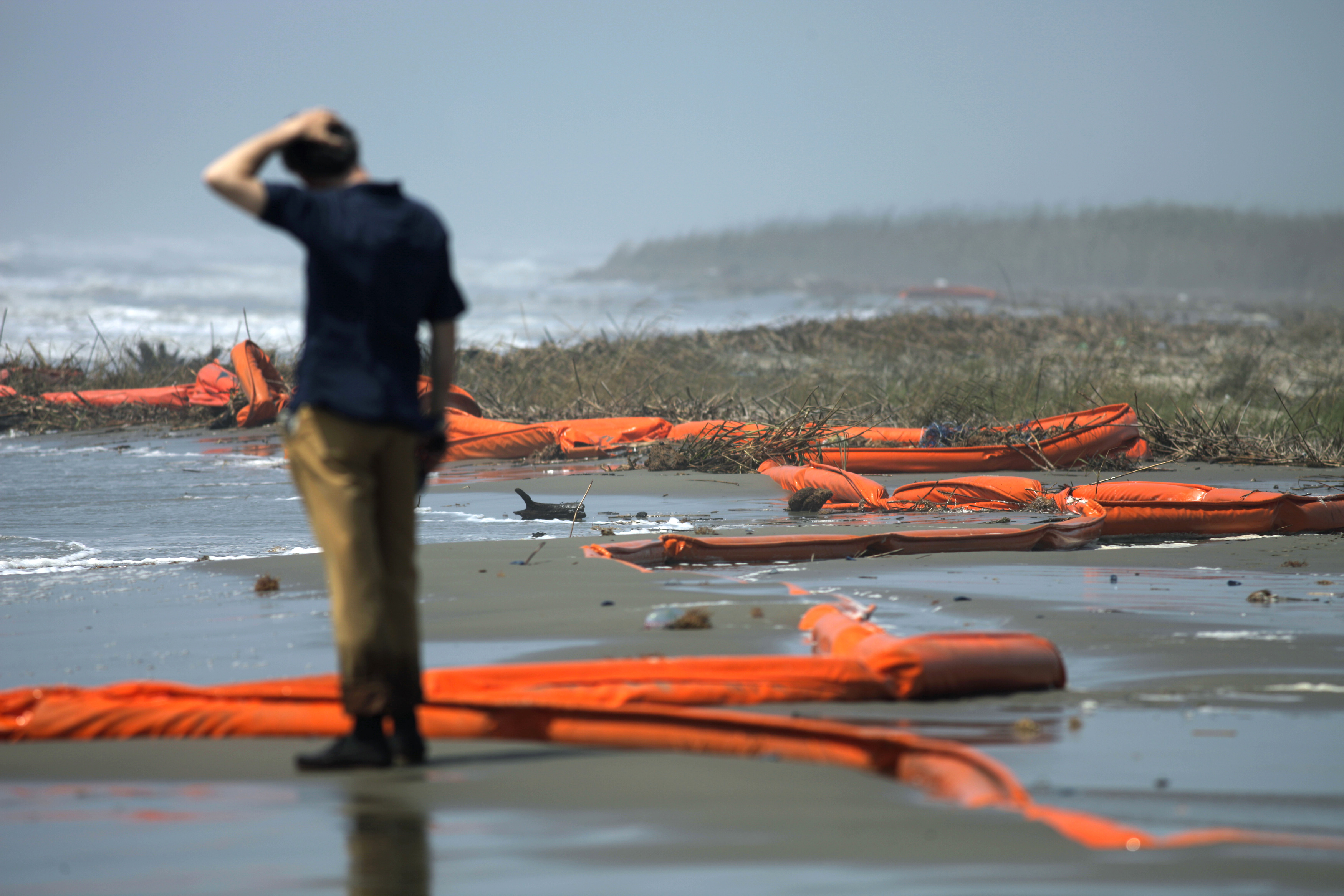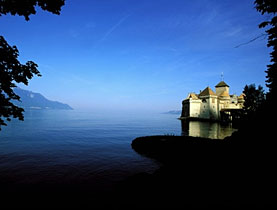Transocean under fire over US oil spill

The Swiss-based drilling contractor, Transocean, is starting to feel the heat – along with BP – over the oil spill disaster in the Gulf of Mexico.
It is still unclear what caused the explosion on the rig operated by BP and owned by Transocean, but many are beginning to point their finger at the Zug-based company’s blowout preventer (BOP) for failing to work properly.
“BP is responsible for this leak — BP will be paying the bill,” President Barack Obama told reporters on Sunday in Venice, a Gulf Coast community serving as a staging area for the response.
BP says it is ready to pay all legitimate claims tied to the oil spill caused by the accident. But the head of BP Group Tony Hayward has said it could have been prevented if Transocean’s BOP had done its job and prevented the explosion. A BOP is a large valve at the top of a well, and activating it will stop the flow of oil.
Indeed, it was not only BP officials who were summoned by US lawmakers on Friday to testify at a hearing examining the causes of the massive oil spill, but representatives of Transocean and Halliburton as well. Halliburton provided a variety of services on the rig and was involved in cementing on the well to stabilize its walls.
“[The BOP] is the ultimate fail-safe mechanism,” Hayward told CNN. “And for whatever reason – and we don’t understand that yet, but we clearly will as a consequence of both our investigation and federal investigations – it failed to operate.
“And that is the key issue here, the failure of the Transocean BOP,” Hayward said, describing the valve as “an integral part of the drilling rig”.
A Transocean spokesman on Monday declined to respond to Hayward’s comments, citing ongoing investigations.
“We will await all the facts before drawing conclusions,” Guy Cantwell told swissinfo.ch.
First port of call
But Joseph Joy, a Louisiana lawyer specializing in off-shore oil rig accidents, felt the BP chief was right, as “Transocean were out with their men, devices and safety processes”.
Offshore blow-outs are not very common, Joy told swissinfo.ch, but the disaster pointed towards the BOP and why it didn’t activate.
“Was it defective? Were there problems with the design or operation, or was it improperly maintained?”
Bill Miller, a British government inspector in charge of health and safety on North Sea oil rigs, said Transocean would be the first “port of call” for any liability enquiry.
“In the UK we would hold the safety case duty holder responsible, and in this case it would be Transocean,” he said, adding that US law might be different.
Miller said he had been surprised by the rig explosion, as “this is a fairly new installation with as modern equipment as you can get”.
Flood of lawsuits
Meanwhile, the legal dimensions of the oil spill continue to spread. At least one of the victims’ families has filed a lawsuit against BP and Transocean, accusing BP specifically of negligence. And over 20 federal lawsuits have been lodged by local businesspeople and private individuals from Louisiana, Florida, Alabama and Mississippi against BP, Transocean, Halliburton and Cameron – which manufactured the BOP.
Daniel Becnel, a Louisiana-based trial lawyer who filed one of the suits, told AFP that the plaintiffs “have a whistle blower on an adjoining rig saying 85 per cent of the drilling pipe was not properly inspected” by the US Minerals Management Service.
“We knew that BP and Transocean, the owner of the Deepwater Horizon, weren’t telling the truth,” said Becnel, a veteran industrial accident litigator.
The companies named as defendants declined comment on the lawsuits, although BP said in a message on its website on Monday that it would pay “all necessary and appropriate clean-up costs” and “legitimate” claims.
Halliburton told Associated Press it was cooperating with the investigation, adding that it was “premature and irresponsible to speculate” on the possible cause of the explosion.
Cantwell said Transocean was “intensely focused on providing support to crew and family members” as well as supporting BP in cleanup efforts and helping with the enquiries.
Simon Bradley, swissinfo.ch
On April 20, 2010, an explosion and fire killed 11 crew members and destroyed a Transocean-owned semisubmersible drilling rig called Deepwater Horizon, positioned about 50 miles southeast of Venice, Louisiana, in water nearly 5,000 feet deep. The rig, one of the largest and most sophisticated in the world, had been under contract to BP, the London-based oil giant, since September 2007.
The Deepwater Horizon accident spewed thousands of barrels of oil a day into the Gulf of Mexico, and experts said it could become the largest oil spill in history. The slick from the rig headed toward sensitive wetlands off the Gulf Coast, threatening to destroy wildlife and the livelihood of thousands of fishermen.
Federal and oil industry officials are working frantically to stanch the flow of oil but most of the solutions – an undersea containment system, a relief well or use of undersea robotic vehicles to try to fix the blowout preventer – are expected to take weeks if not months.
The Gulf of Mexico accounts for one-third of America’s domestic oil production and one-fourth of its natural gas. There are 90 exploratory rigs working there and about 3,500 oil-producing platforms.
Transocean is the world’s largest offshore drilling contractor.
Although it was established in the US, its headquarters have been in the Swiss town of Zug since 2008. It also has an office in Geneva.
According to its website it has 138 mobile offshore drilling rigs and 20,000 employees worldwide, 40 of whom are in Switzerland.
Its website describes its safety vision as: conducting its operations “in an incident-free workplace, all the time, everywhere”.
Its clients are global energy firms, national petroleum companies and independent contractors.
It constructs wells for both oil and gas all round the world: the Gulf of Mexico and eastern Canada, Brazil, the British and Norwegian sectors of the North Sea, West Africa, Asia, including Australia and India, the Middle East, including Saudi Arabia, and the Mediterranean.
Last year the company had a turnover of $11.6 billion (SFr12.35) billion and registered a net profit of $3.2 billion.
The firm was officially registered on the Swiss stock exchange on April 20. Its market value then fell from SFr101.1 to SFr76 on April 30.

In compliance with the JTI standards
More: SWI swissinfo.ch certified by the Journalism Trust Initiative













You can find an overview of ongoing debates with our journalists here . Please join us!
If you want to start a conversation about a topic raised in this article or want to report factual errors, email us at english@swissinfo.ch.